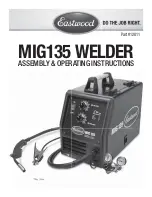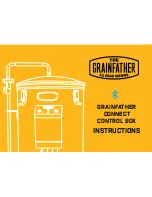
XPR-10 Series Two-Post Lifts
73
P/N 5900951 — Rev. D — May 2019
Wire Rope Inspection and Maintenance
Your Lift’s wire rope should be inspected regularly:
•
Lifting cables should be replaced when there are visible signs of damage or extreme wear.
Do not
use the Lift if it has damaged or worn cables.
•
Lifting cables should be maintained in a well-lubricated condition at all times.
Wire rope is fully protected when each wire strand is lubricated both internally and externally.
Excessive wear shortens the life of wire rope. Use a wire-rope lubricant that penetrates to the core
of the rope and provides long-term lubrication between each individual strand, such as 90-WT
gear oil or ALMASOL® Wire Rope Lubricant.
To make sure that the inner layers of the rope remain well lubricated, lubrication should be carried
out at intervals not exceeding three months during operation.
•
All sheaves and guide rollers in contact with the moving rope should be given regular visual checks
for surface wear and lubricated to make sure they run freely. This operation should be carried out
at appropriate intervals generally not exceeding three months during operation.
For all sheave axles, use standard wheel bearing grease. For all sheaves and/or guide rollers, use
90-WT gear oil or a similar heavy lubricant, applied by any method including pump/spray
dispensing, brush, hand, or swabbing.
•
How often should you inspect?
Lifting cables should be visually inspected at least once each day when in use, as suggested by
American Petroleum Institute’s Recommended Practice 54 guidelines. Any lifting cables that have
met the criteria for removal must be immediately replaced.
•
When should you replace lifting cables due to broken wires?
Lifting cables should be removed from service when you see six randomly distributed broken wires
within any one lay length, or three broken wires in one strand within one lay length.
•
Are there other reasons to replace your lifting cables?
Yes. Corrosion that pits the wires and/or connectors, evidence of kinking, crushing, cutting, bird-
caging, or a popped core, wear that exceeds 10% of a wire’s original diameter, or heat damage.
•
How do you find broken wires?
a.
Relax your rope to a stationary position and move the pick-up points off the sheaves. Clean the
surface of the rope with a cloth — a wire brush, if necessary — so you can see any breaks.
b.
Flex the rope to expose any broken wires hidden in the valleys between the strands.
c.
Visually check for any broken wires. One way to check for crown breaks is to run a cloth along
the rope to check for possible snags.
d.
With an awl, probe between wires and strands and lift any wires that appear loose. Evidence of
internal broken wires may require a more extensive rope examination.
Summary of Contents for XPR-10 Series
Page 9: ...XPR 10 Series Two Post Lifts 9 P N 5900951 Rev D May 2019 Specifications ...
Page 77: ...XPR 10 Series Two Post Lifts 77 P N 5900951 Rev D May 2019 Labels ...
Page 78: ...XPR 10 Series Two Post Lifts 78 P N 5900951 Rev D May 2019 ...
Page 79: ...XPR 10 Series Two Post Lifts 79 P N 5900951 Rev D May 2019 ...
Page 81: ...XPR 10 Series Two Post Lifts 81 P N 5900951 Rev D May 2019 ...
Page 82: ...XPR 10 Series Two Post Lifts 82 P N 5900951 Rev D May 2019 ...
Page 83: ...XPR 10 Series Two Post Lifts 83 P N 5900951 Rev D May 2019 ...
Page 84: ...XPR 10 Series Two Post Lifts 84 P N 5900951 Rev D May 2019 ...
Page 85: ...XPR 10 Series Two Post Lifts 85 P N 5900951 Rev D May 2019 ...
Page 86: ...XPR 10 Series Two Post Lifts 86 P N 5900951 Rev D May 2019 ...
Page 87: ...XPR 10 Series Two Post Lifts 87 P N 5900951 Rev D May 2019 ...
Page 88: ...XPR 10 Series Two Post Lifts 88 P N 5900951 Rev D May 2019 ...
Page 91: ...XPR 10 Series Two Post Lifts 91 P N 5900951 Rev D May 2019 Maintenance Log ...
















































